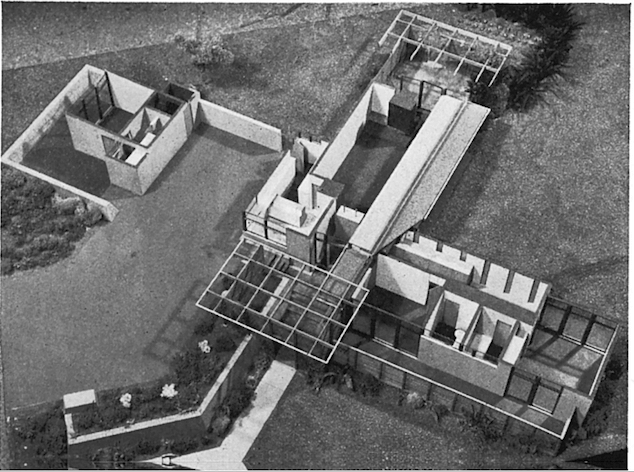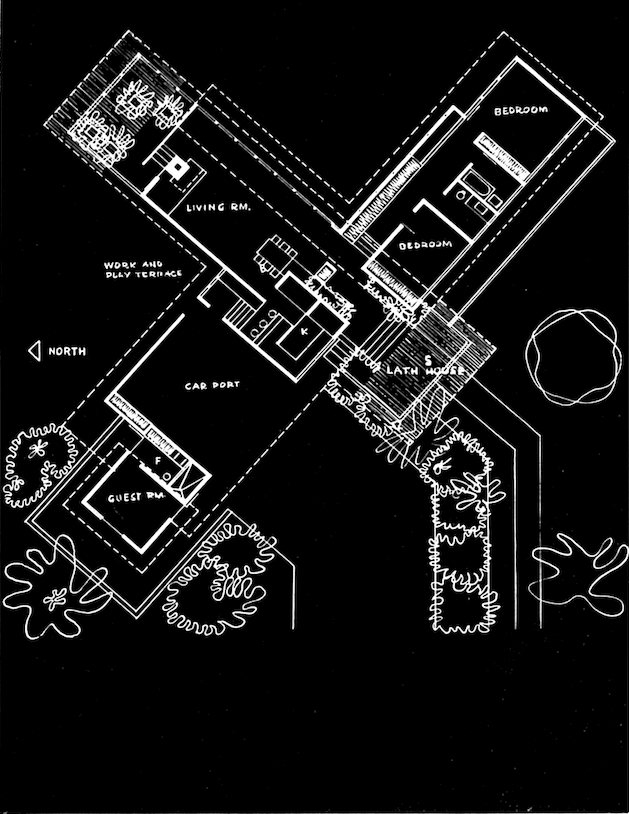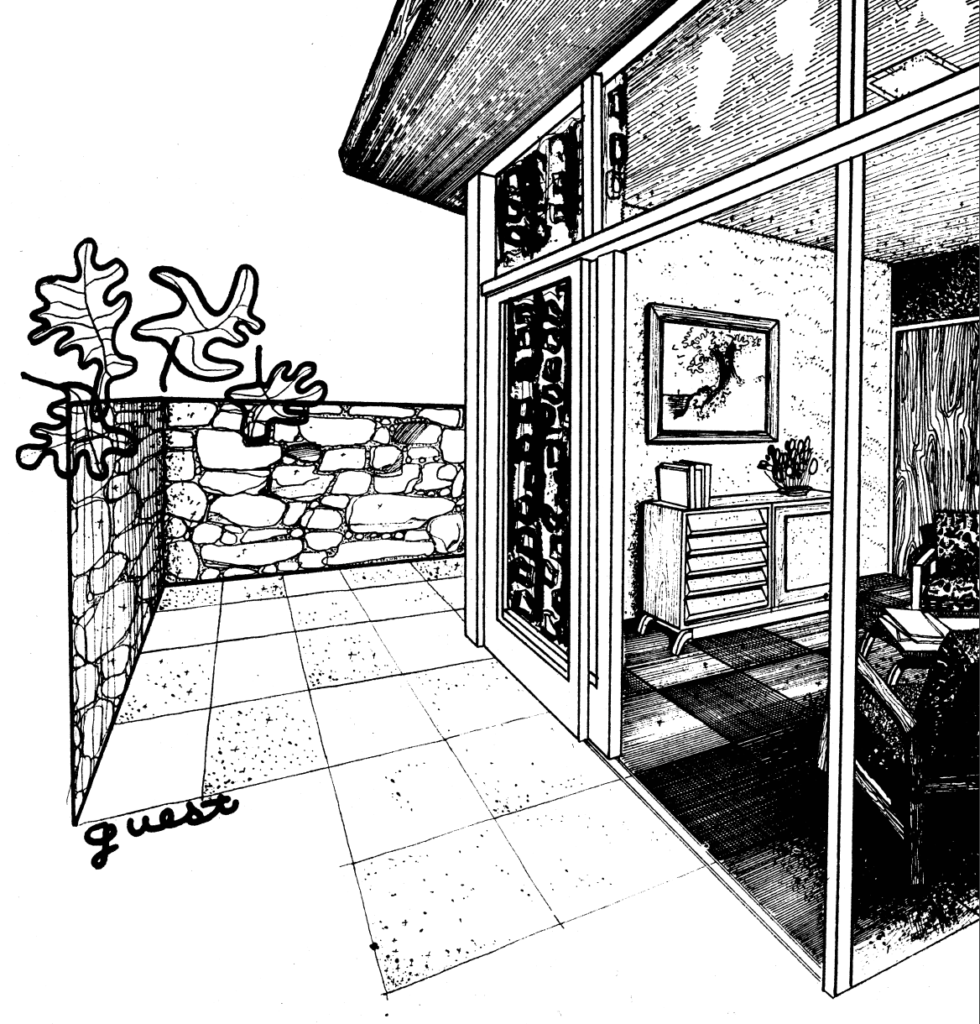The Case Study Houses were and are an illustration of modernism’s intended audience—the masses. These homes were intended to change the way we look at residential design and forever alter the way we live. Built or unfinished, preserved or lost, join us as we take a closer look at each of the iconic designs that carry the name “Case Study House.” In this installment we look at house #12.

Meet House #12
Architect Whitney R. Smith designed two unbuilt Case Study Houses, both an exercise in re-thinking the traditional layout of a home. Number five was an extreme example of outdoor living and Number 12 was meant to revolve around a love for horticulture.

Layout
A roughly X-shaped design allowed for maximum access to outdoor areas. One straight section of the “X” contains a lath house adjoined with the entrance hall, followed by the living room and then a second lath house. “The house follows the natural slope of the land from north to south. Living room is two feet lower than the lath house behind it, and the lath house at the entrance is two feet below living room level,” states the introductory December 1946 Arts & Architecture article.
The other section of the “X” contains one wing with a main bathroom shared by two bedrooms on either side. A second wing houses a guest bedroom with a bath and dressing area. The guest bedroom is separated from the main home by a car port and has its own terrace, making it a flexible private space.

The Outdoor Connection
Transition from indoor to outdoor spaces is prevalent throughout the entirety of the design. “The plan is so arranged that one lath house provides inviting transition from the outdoors to the glassed front entrance; another, at the opposite end of the large multi-use room, makes a background for a freestanding fireplace.” Additionally, the room placement allows for all parts of the main living area to see plants from at least one of the lath houses.
Rather than a parallel orientation on the lot, the home was planned with a diagonal placement. This would have helped to avoid northern exposure and also created outdoor zones for the connecting rooms.

Materials
The stand-out feature for Case Study House #12 were the lath houses with their open wooden slats. The home was planned to be wood frame on a concrete slab with plaster on the interior and exterior. Though this house was never realized, the design was a creative study in re-imagining the conventional layout.
Curious about other Case Study Houses? Find numbers 1-11 in our archives, working backwards from #11. And don’t forget to follow us on Instagram, Facebook and Pinterest for more mid century articles and ideas!











